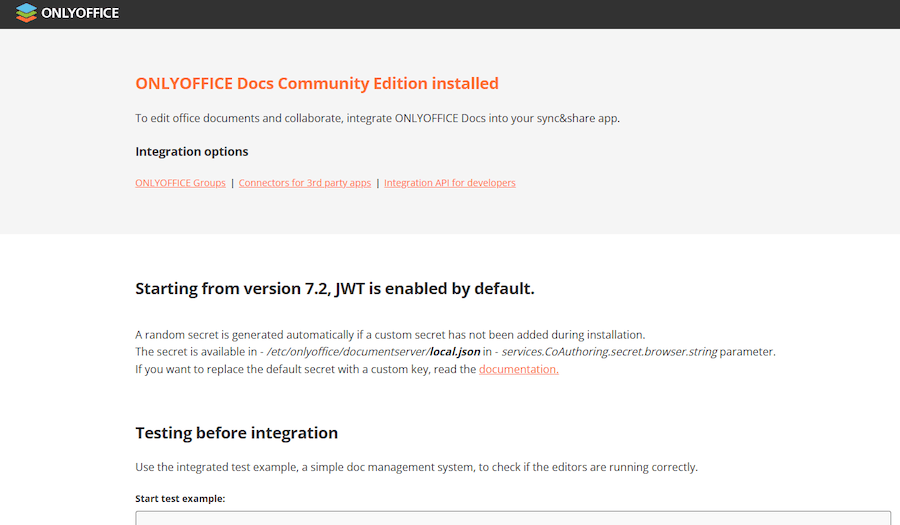How To Install OnlyOffice on Fedora 40

In this tutorial, we will show you how to install OnlyOffice on Fedora 40. OnlyOffice is an open-source office suite that comprises a range of components, including the Document Server, Community Server, and Mail Server. The Document Server is the core component that provides online editors for text documents, spreadsheets, and presentations, enabling collaborative editing in real time.
One of the key advantages of OnlyOffice is its compatibility with popular file formats, such as .docx, .xlsx, and .pptx, ensuring seamless integration with other office suites. Additionally, OnlyOffice offers a range of features, including mobile web viewers, collaborative editing, and support for hieroglyphs and various languages.
This article assumes you have at least basic knowledge of Linux, know how to use the shell, and most importantly, you host your site on your own VPS. The installation is quite simple and assumes you are running in the root account, if not you may need to add ‘sudo‘ to the commands to get root privileges. I will show you the step-by-step installation of the OnlyOffice on Fedora 40.
Prerequisites
Before we dive into the installation process, ensure that you have the following prerequisites in place:
- A server running one of the following operating systems: Fedora 40.
- It’s recommended that you use a fresh OS install to prevent any potential issues.
- You will need access to the terminal to execute commands. Fedora provides the Terminal application for this purpose. It can be found in your Applications menu.
- A stable internet connection to download the necessary packages.
- A non-root sudo user or access to the root user. We recommend acting as a non-root sudo user, however, as you can harm your system if you’re not careful when acting as the root.
Install OnlyOffice on Fedora 40
Step 1. Update the System.
Before installing any new software, it is crucial to ensure that your Fedora 40 system is up-to-date with the latest security patches and software updates. Open a terminal and run the following command:
sudo dnf clean all sudo dnf update
The package manager will retrieve the latest package information and prompt you to confirm the update. Press “y” and hit Enter to proceed with the update process. Depending on the number of updates available, this step may take a few minutes to complete.
Step 2. Installing OnlyOffice on Fedora 40.
There are several methods available for installing OnlyOffice on Fedora 40, each with its own advantages and considerations. In this article, we’ll cover three popular methods: using the RPM package, Docker, and Snap.
- Method 1: Installing OnlyOffice Using RPM Package.
Visit the OnlyOffice download page and download the RPM package for Fedora. Alternatively, you can use the following command to download it directly:
sudo wget https://download.onlyoffice.com/install/desktop/editors/linux/onlyoffice-desktopeditors.x86_64.rpm
Navigate to the directory where the RPM package is downloaded and install it using the dnf command:
cd ~/Downloads sudo dnf install onlyoffice-desktopeditors.x86_64.rpm
Once the installation is complete, you can launch ONLYOFFICE from the applications menu or by running the following command:
onlyoffice-desktopeditors
- Method 2: Installing OnlyOffice Using Snap
Snap is a universal package management system that simplifies the installation and updating of applications on various Linux distributions, including Fedora 40. Installing ONLYOFFICE using Snap is a convenient option for users who prefer a streamlined and hassle-free installation process. If you haven’t already, install Snap on your Fedora 40 system by following the Snap installation guide.
Run the following command to install the ONLYOFFICE Snap package:
sudo snap install onlyoffice-ds
After the installation is complete, you can launch OnlyOffice by running the onlyoffice-ds command in the terminal or by searching for it in the applications menu.
- Method 3: Installing OnlyOffice Using Docker
Docker is a popular containerization platform that simplifies the deployment and management of applications. Installing OnlyOffice using Docker is an excellent choice for users who prioritize portability, scalability, and ease of maintenance. If you haven’t already, install Docker on your Fedora 40 system by following the Docker installation guide.
Run the following command to download the OnlyOffice Docker image:
sudo docker pull onlyoffice/documentserver
Once the image is downloaded, run the following command to start the OnlyOffice Docker container:
sudo docker run -i -t -d -p 80:80 onlyoffice/documentserver
This command maps the container’s port 80 to your host’s port 80, allowing you to access OnlyOffice via http://localhost.
Now open your web browser and navigate to http://localhost to access the OnlyOffice interface.

Congratulations! You have successfully installed OnlyOffice. Thanks for using this tutorial for installing the OnlyOffice on Fedora 40 system. For additional help or useful information, we recommend you check the OnlyOffice website.